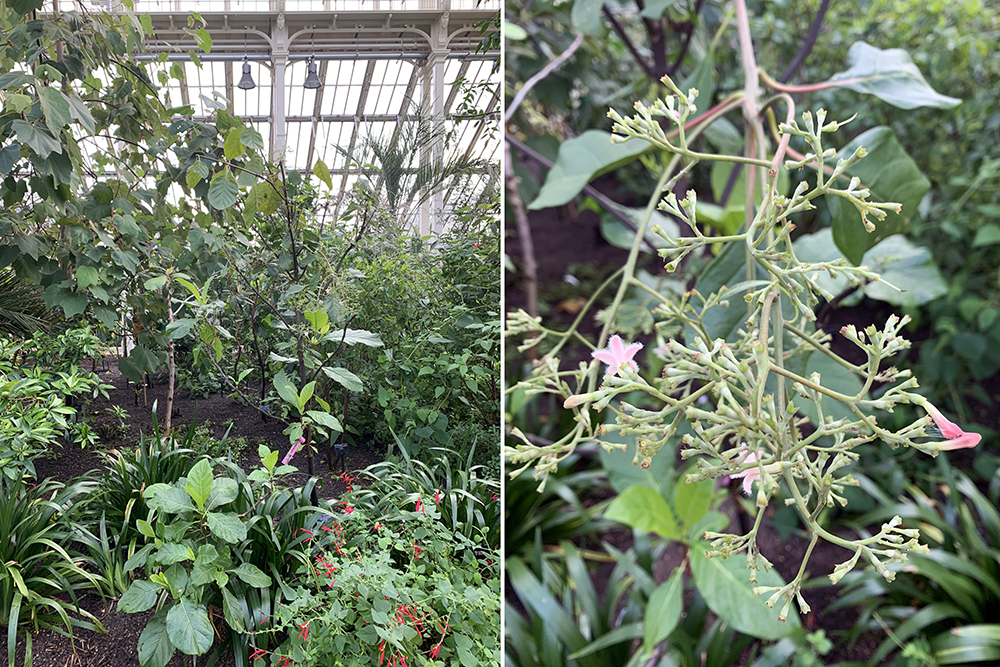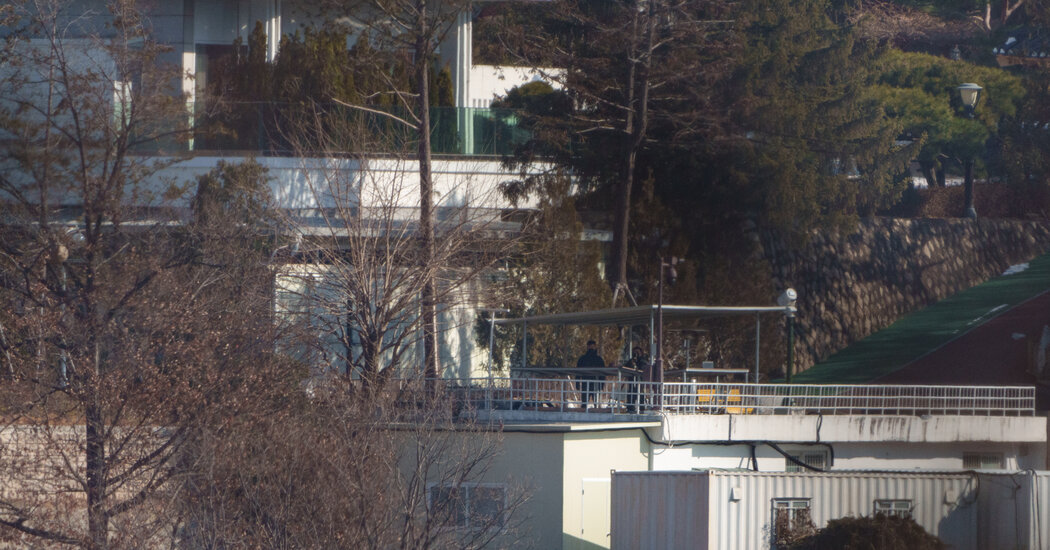Just a few decades ago, gin & tonics were considered rather stodgy and boring, the drink of suburbanites at the golf club. Today, the century-old drink is hot again. In part, that’s due to a boom in craft gin distilling—a ginaissance! But there’s also been a new wave of experimentation with gin’s life partner, tonic water. This episode, we focus on the tonic side of the equation. Which genius came up with the idea of combining quinine, a malaria drug, with soda water and sugar in order to create this refreshing beverage? How did the bark of a South American tree end up in everything from hair-restoring shampoo to cocktails? And is it true that the G&T began life as a pleasant way for the Anglo-Indian elite to take their anti-malarials? This episode, we take a sip of tonic’s history with Kim Walker and Mark Nesbitt, authors of the new book Just the Tonic: A Natural History of Tonic Water. Listen in for all that, plus beef-infused tonic wines, Aperol spritzes, and the gin & tonic’s true origin story. Cheers!
Just the Tonic
Kim Walker and Mark Nesbitt are the authors of the new book, Just the Tonic, A Natural History of Tonic Water, published by the Royal Botanic Gardens, Kew. It’s filled with gorgeous botanical drawings and amazing old advertisements, as well as suggestions for how to expand your tonic menu beyond its partnership with gin. In addition to trying out some of their recipes (we look forward to tasting them ourselves!), we do recommend branching out past the standard tonic waters like Schweppes and Canada Dry, and trying some of the new, artisanal tonic waters available. They’re delicious!
Left: A small cinchona tree in Kew’s greenhouse; Right: a close-up of the cinchona flowers. Photograph by Nicola Twilley.
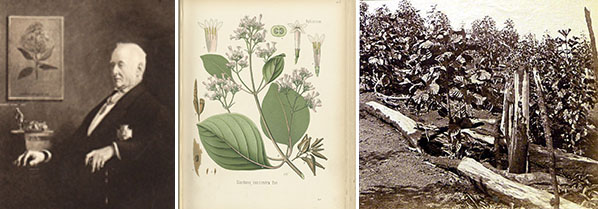 Left: Portrait of Sir Clements Markham, via the Royal Geographical Society with IBG; Center: Botanical illustration of cinchona, via Kew Royal Botanic Gardens; Right: Cinchona bark harvesting, via Photograph collection of John Abercromby Alexander.
Left: Portrait of Sir Clements Markham, via the Royal Geographical Society with IBG; Center: Botanical illustration of cinchona, via Kew Royal Botanic Gardens; Right: Cinchona bark harvesting, via Photograph collection of John Abercromby Alexander.
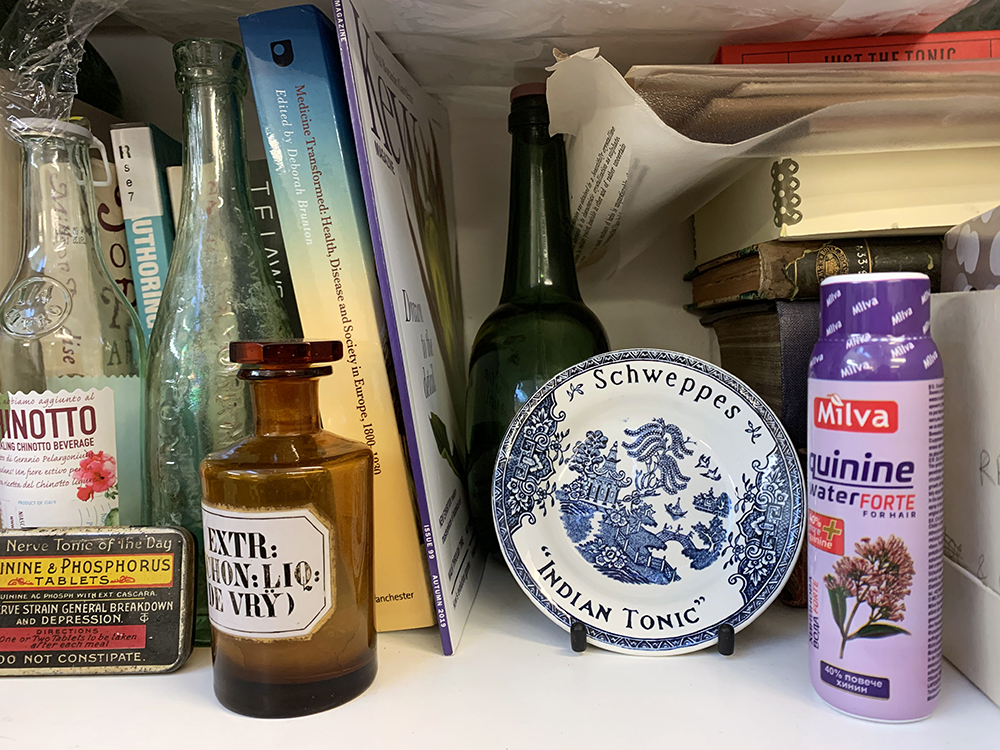 A small selection of Mark and Kim’s tonic collection in their office at Kew. Photograph by Nicola Twilley.
A small selection of Mark and Kim’s tonic collection in their office at Kew. Photograph by Nicola Twilley.
Don’t Try This At Home
Kim made her own tonic from cinchona bark, and cinchona bark is certainly available for purchase. She cautioned, though, that it’s easy to far exceed the levels of quinine that are considered safe. Kim didn’t want to reveal her secrets on air, but we did promise you we’d share them here. If you decide to try this, please please be careful. At very low doses, quinine is a delicious bitter addition to drinks. At medium low doses, it’s a medicine that can come with some really serious side effects. At high doses, it’s a poison. Kim mentioned the recipe on Camper English’s Alcademics website as a trustworthy place to start, but, please (we cannot say this enough) BE CAREFUL!
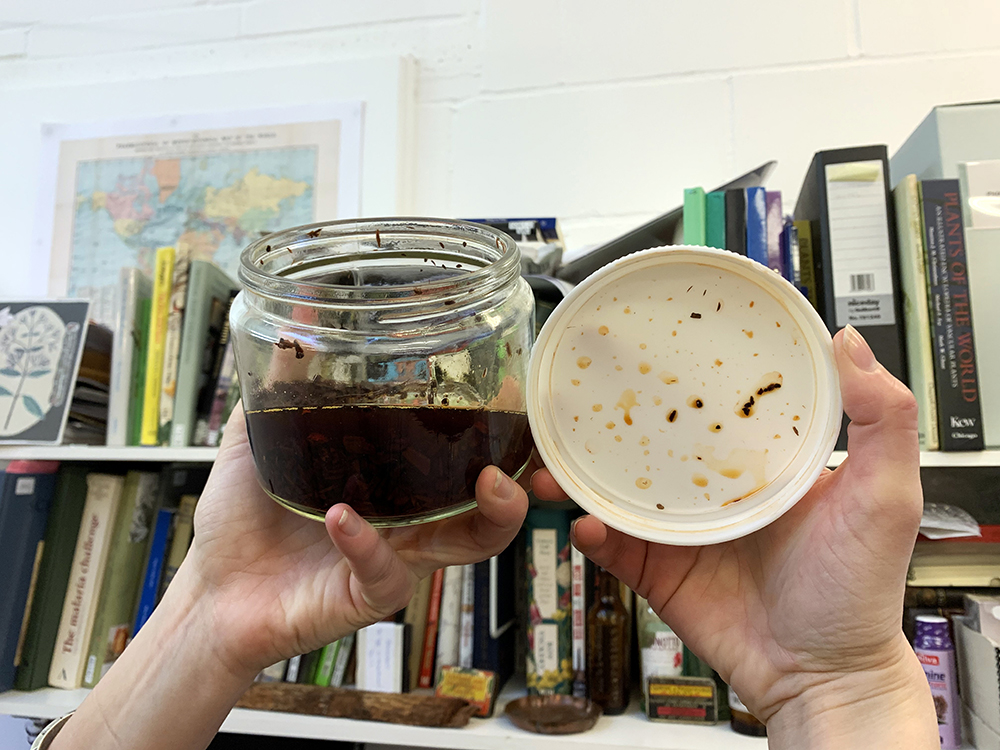 Kim holding her cinchona bark extract to admire the reddish color. Photograph by Nicola Twilley.
Kim holding her cinchona bark extract to admire the reddish color. Photograph by Nicola Twilley.
The Craft of Science Writing
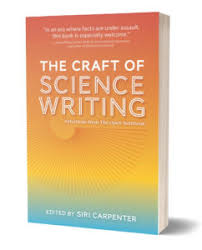 Interested in trying your hand at science writing? The Open Notebook is a nonprofit that, for the past decade, has published more than a hundred articles, all about how to sharpen your science writing skills. And now they’ve published their first book: The Craft of Science Writing! It’s got 30 chapters, with everything from how to get started in the field, to how to pitch stories and do the reporting, all the way through how to write a great ending. We highly recommend it!
Interested in trying your hand at science writing? The Open Notebook is a nonprofit that, for the past decade, has published more than a hundred articles, all about how to sharpen your science writing skills. And now they’ve published their first book: The Craft of Science Writing! It’s got 30 chapters, with everything from how to get started in the field, to how to pitch stories and do the reporting, all the way through how to write a great ending. We highly recommend it!
Filling the Void
 As Nicky mentioned, she wrote the cover story for the March 2020 issue of Wired… and it’s all about space food! To research the piece, she ate boba pearls while floating in zero-G, but also spoke to the scientists, designers, and astronauts who are creating a future of flavors, cooking techniques, and dining rituals that are space-native—and only possible in micro-gravity. You can read the story online here; it’s on newsstands on February 18.
As Nicky mentioned, she wrote the cover story for the March 2020 issue of Wired… and it’s all about space food! To research the piece, she ate boba pearls while floating in zero-G, but also spoke to the scientists, designers, and astronauts who are creating a future of flavors, cooking techniques, and dining rituals that are space-native—and only possible in micro-gravity. You can read the story online here; it’s on newsstands on February 18.
Transcript
Click here for a transcript of the show. Please note that the transcript is provided as a courtesy and may contain errors.
